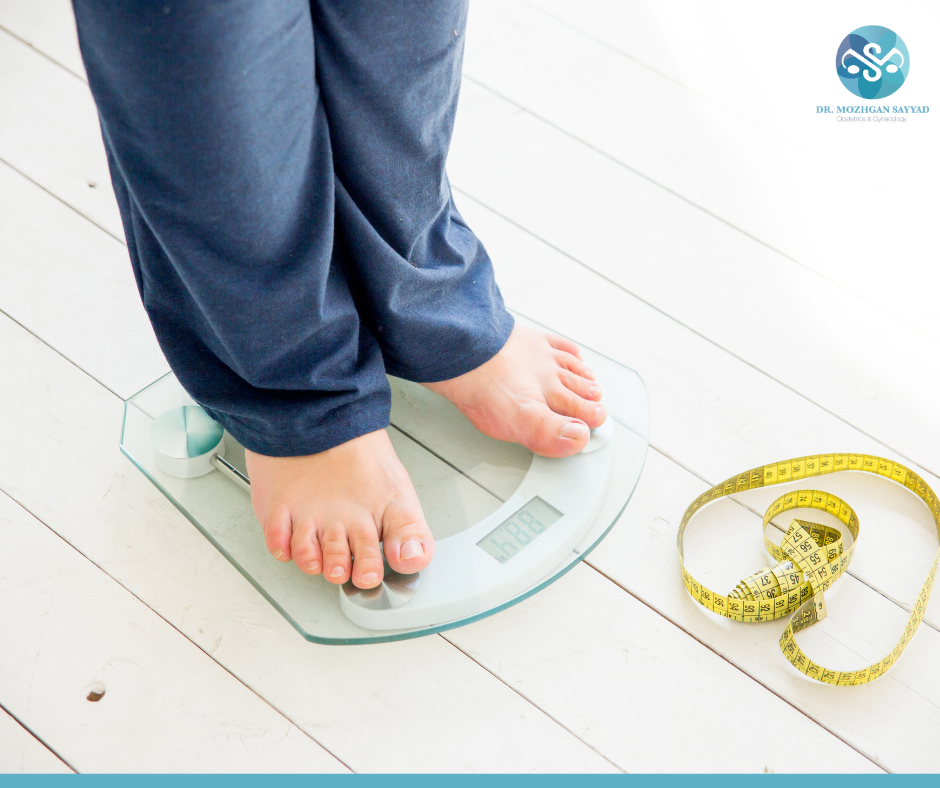Menopause is a natural biological process that marks the end of a woman’s fertility. Menopause comes with a variety of uncomfortable symptoms like hot flashes, night sweats, and vaginal dryness. One of the best ways to combat menopausal symptoms is to follow a healthy lifestyle that’s built on a nutritious diet, regular physical activities, and effective stress management. In this article we have outlined the best diet and exercise for menopause.
A Brief Look at Menopause
Menopause is a natural biological process that signifies the end of a woman’s reproductive years. It’s typically seen in women during their late 40s and early 50s. Some of the common symptoms of menopause include hot flashes, night sweats, vaginal dryness, mood swings, etc.
Related: Menopause | Menopause Counselling & Support
Understanding the Hormonal Changes During Menopause
During menopause, we see a significant shift in hormones, mainly estrogen and progesterone. This hormonal fluctuation can affect various aspects in women, including metabolism. Let’s look at how these changes impact metabolism, fat distribution, and appetite changes.
- Effect on Metabolism: A decline in estrogen during menopause leads to a decline in metabolism. A slower metabolism can make it easier to gain weight. Additionally, hormonal fluctuations also impact fat distribution. During menopause, there’s a higher tendency to store fat around the abdomen rather than the hips and thighs.
- Effect on Weight: Hormonal fluctuation during this period also impacts the body composition, leading to increased body fat and decreased lean muscle mass.
- Effect on Appetite & Cravings: During menopause, it’s common to see some women experience an increased appetite while others don’t. Emotional symptoms along with hormonal changes may also lead to cravings, specifically for food high in sugar and carbohydrates.
- Effect on Insulin: Hormonal fluctuations can also impact insulin sensitivity, potentially causing insulin resistance. Insulin resistance can also make it much harder for women to lose weight.

Recommended Diet During Menopause
Maintaining a nutritional diet is key to managing this major transition. Here are some general dietary recommendations to follow during menopause:
- Heart-Healthy Diet: Try to create a heart-healthy diet that includes at least five portions of different colored fruits and veggies, high in fiber-rich foods, peas, and beans.
- Calcium & Vitamin D: As estrogen levels decline, calcium and vitamin D are crucial to maintaining bone health. Some excellent sources of calcium include leafy green veggies and dairy products. You can also get vitamin D through sunlight, fatty fish, and fortified foods.
- Whole Grains: During menopause, it’s recommended to choose whole grains over refined grains as they support energy levels, help manage weight, and provide adequate fiber. Sources of whole grains include brown rice, quinoa, and oats.
- Lean Proteins: It’s best to include lean proteins in your diet as they can help build muscle health and support metabolism. Sources of lean proteins include poultry, fish, beans, lentils, tofu, and low-fat dairy products.
- Fruits & Vegetables: Aim to make your plate as colorful as possible with a variety of fruits and veggies that are rich in vitamins, minerals, and antioxidants. These foods positively contribute to your overall health, allowing you to manage menopausal symptoms better.
- Healthy Fats: Healthy fats are essential for hormone production and can also support heart health. Sources of healthy fats include avocados, nuts, seeds, and olive oil.
- Phytoestrogen-Rich Foods: Phytoestrogen is a natural compound present in plants and plant-based foods. These compounds, when eaten, produce similar effects to estrogen in the body. As menopause leads to a gradual decline in estrogen, it’s best to include phytoestrogen-rich foods into your diet to supplement the loss. Foods like flaxseeds and whole grains are good sources of phytoestrogen.
- Iron-Rich Foods: Low estrogen levels can also impact how iron is used in the body causing iron fluctuations. Try to get at least three servings of iron-rich foods every day. Some sources include lean red meat, poultry, eggs, fish, leafy green veggies, and nuts.
- Hydration: Adequate hydration is key to managing symptoms like hot flashes and supporting overall health. Aim to drink plenty of water throughout the day.
- Regular Meals & Snacks: Try to eat regular and balanced meals to stabilize blood sugar levels and maintain energy throughout your day.
Following these general guidelines can positively impact your overall health and help ease menopause symptoms. For a more personalized approach, consult a qualified gynecologist in your area.

Foods to Avoid During Menopause
To sustain a healthy diet, it’s crucial to avoid certain foods that can impact your overall health negatively. Here are some foods to avoid during menopause:
- Added Sugars & Processed Foods: Although delicious, try to minimize your intake of added sugars and processed foods as they can increase weight and negatively impact your overall health. Try to include whole and nutrient-dense foods.
- Caffeine & Alcohol: If you’re someone who loves their coffee, it might be best to reduce your intake. The same goes for alcohol too. According to research, excessive caffeine and alcohol can exacerbate menopausal symptoms and disrupt sleep. Limit these substances to the best of your ability for an easier journey.
- Fatty Meats & High-Fat Dairy Products: It’s best to limit fatty meats and high-fat dairy products as they can cause weight gain and increase the risk of heart disease.
- Trans-Fats: Avoid foods that are high in trans-fat as they can increase cholesterol levels and increase the risk of heart disease.
- Salt: Excessive salt consumption can lead to high blood pressure, therefore, it’s best to limit salt and salty foods in your diet.
- Smoked, Salt-Cured & Charbroiled Foods: As these foods contain high levels of nitrate, a compound linked to cancer, it’s recommended to avoid such foods.

Best Exercises for Menopausal Women
Exercise, as we all know, is an excellent way to maintain overall health. So, it’s not a surprise that regular exercise is also a great strategy to combat menopausal symptoms. Here are some of the best exercises recommended for women during menopause:
- Cardiovascular Exercises: Engaging in regular cardiovascular exercise can bring several mental and physical benefits for menopausal women. Exercises like brisk walking, cycling, and swimming can improve cardiovascular health and help tone muscles. Among the many cardiovascular exercises, walking is one of the easiest to incorporate into your daily life. Aim for at least 150 minutes of moderate-intensity walking per week.
- Strength Training: Incorporating strength training into your routine can help improve bone and joint health, support metabolism, enhance functional abilities, regulate hormones, reduce the risk of chronic conditions, and help manage weight. Exercises like weightlifting and yoga or Pilates are excellent options for strength training.
- Weight-Bearing Exercises: For those with healthy joints, running or jogging can be an effective method to maintain cardiovascular fitness and bone health. Similarly, jumping rope is also beneficial. If it’s your first time jumping rope, start with short sessions and gradually increase the intensity.
- Flexibility & Balance: Engaging in various flexibility exercises like Tai Chi can help improve sleep quality, pelvic health, blood circulation, joint motion, and posture. Try to include both dynamic and static stretches in your routine.
- High-Intensity Interval Training [HIIT]: HIIT exercises are short bursts of intense exercises followed by lower-intensity resting periods. These exercises can be an effective way to boost cardiovascular health and metabolism.
- Mind-Body Exercises: As you know, menopause comes with a wave of emotions. That’s why it’s important to incorporate exercises that help navigate emotions and manage stress. Engage in regular mind-body exercises like meditation and mindfulness to relax and enhance mental well-being.
- Pelvic Floor Exercises: Pelvic floor exercises, also known as Kegel exercises, are great at strengthening pelvic floor muscles. In addition to supporting pelvic muscles, these exercises can also improve bladder control, reduce risk of prolapse, enhance sexual function, prevent vaginal atrophy, improve bowel function, and reduce back pain.
- Aerobic Dance or Zumba: Joining a Zumba or dance class can be a fun way to incorporate some movement into your routine. Dance your way into good health and a better mood with these exercises.
- Breathing Exercises: Engage in regular breathing exercises to reduce stress and promote relaxation.

Diet & Exercise for Targeted Symptoms
- Hot Flashes & Night Sweats: Hot flashes and night sweats are two of the uncomfortable symptoms that accompany menopause. Although there’s no universal solution for the problem, certain dietary changes and exercises can alleviate the symptoms.
Dietary Changes to Prevent Hot Flashes & Night Sweats: To reduce hot flashes and night sweats, it’s crucial to first understand the foods that trigger these symptoms. In addition to limiting such triggers, try to include phytoestrogen-rich foods, remain hydrated, and limit processed foods. You can also take vitamin E and B supplements to reduce the severity of symptoms.
Exercises to Prevent Hot Flashes & Night Sweats: Some of the recommended exercises are cardiovascular exercises, yoga, cooling exercises, deep breathing practices, strength training, and pelvic floor exercises. - Osteoporosis: Osteoporosis is a condition where the bones gradually weaken making them fragile and prone to fractures.
Dietary Changes to Prevent Osteoporosis: To prevent osteoporosis during menopause, ensure you get adequate calcium intake daily, take vitamin D supplements, follow a protein-rich diet, include foods rich in magnesium and vitamin K, and reduce unhealthy habits like smoking and drinking.
Exercises to Prevent Osteoporosis: Some of the recommended exercises to prevent osteoporosis are weight-bearing exercises, strength training, high-impact activities, resistance exercises, balance and flexibility training, and core strengthening. - Vaginal Dryness: Vaginal dryness is another common symptom that affects women. Although dietary changes and regular exercise don’t directly solve vaginal dryness, they can certainly improve vaginal health and moisture.
Dietary Changes to Prevent Vaginal Dryness: To combat vaginal dryness, follow a diet rich in omega-3 fatty acids, vitamin E, probiotics, and protein. Additionally, hydration can also help improve the mucous membrane of the vagina.
Exercises to Prevent Vaginal Dryness: Some of the recommended exercises to prevent vaginal dryness are Kegel exercises, yoga or Pilates, aerobic exercises, core strengthening, and breathing exercises.

Get Help with Dr. Mozhgan
As you can see, there are various ways to manage menopausal symptoms through diet and exercise. If you’re struggling with menopause, contact Dr. Mozhgan Sayyad. She is one of best gynecologists in Dubai with over 25 years of experience and knowledge. Throughout her career, she has helped countless women regain their confidence and happiness.
Book an appointment today & take control of your health!
Common FAQs
Q1. What are the best exercises for menopause?
A1: The best exercise for menopause includes a combination of cardiovascular exercise, strength training, and flexibility and balance exercises.
Q2. What are the four foods to manage menopause?
A2. There are a variety of foods that can help manage menopause symptoms. Four of them include fatty fish, soy products, flaxseeds, and leafy greens.
Q3. What is the fastest way to lose weight during menopause?
A3. While there are no fast ways to reduce weight, it’s possible to lose weight healthily by following a nutritious diet, regular exercise, and adequate stress management. Remember, rapid weight loss is never recommended, aim for sustainable lifestyle changes.
Q4. How to lose belly fat in menopause?
A4. To target belly fat in menopause, follow a balanced diet, engage in regular aerobic and strength training exercises, and incorporate stress management techniques.
Q5. Can diet, exercise, and weight loss delay menopause?
A5. Menopause is a normal biological process that cannot be delayed. However, following a healthy lifestyle can certainly bring tremendous benefits to overall health, including improving menopause symptoms.
Q6. Will exercise alone help lose weight after menopause?
A6. Without a doubt, regular exercise is a great way to lose weight after menopause. However, to reap the many benefits of exercise and lose weight effectively, you must combine it with a healthy diet.
Q7. What are good weight loss tips for post-menopausal women?
A7. Some of the best weight loss tips for postmenopausal women include engaging in regular physical activity, following a healthy lifestyle, getting adequate sleep, staying hydrated, and managing stress effectively.
Q8. Is it possible to lose weight and belly fat after menopause?
A8. Of course! By following a healthy lifestyle [nutritious diet, regular physical activity, effective stress management], you can certainly lose weight and belly fat. Remember, consistency and patience are key to achieving your desired results.


